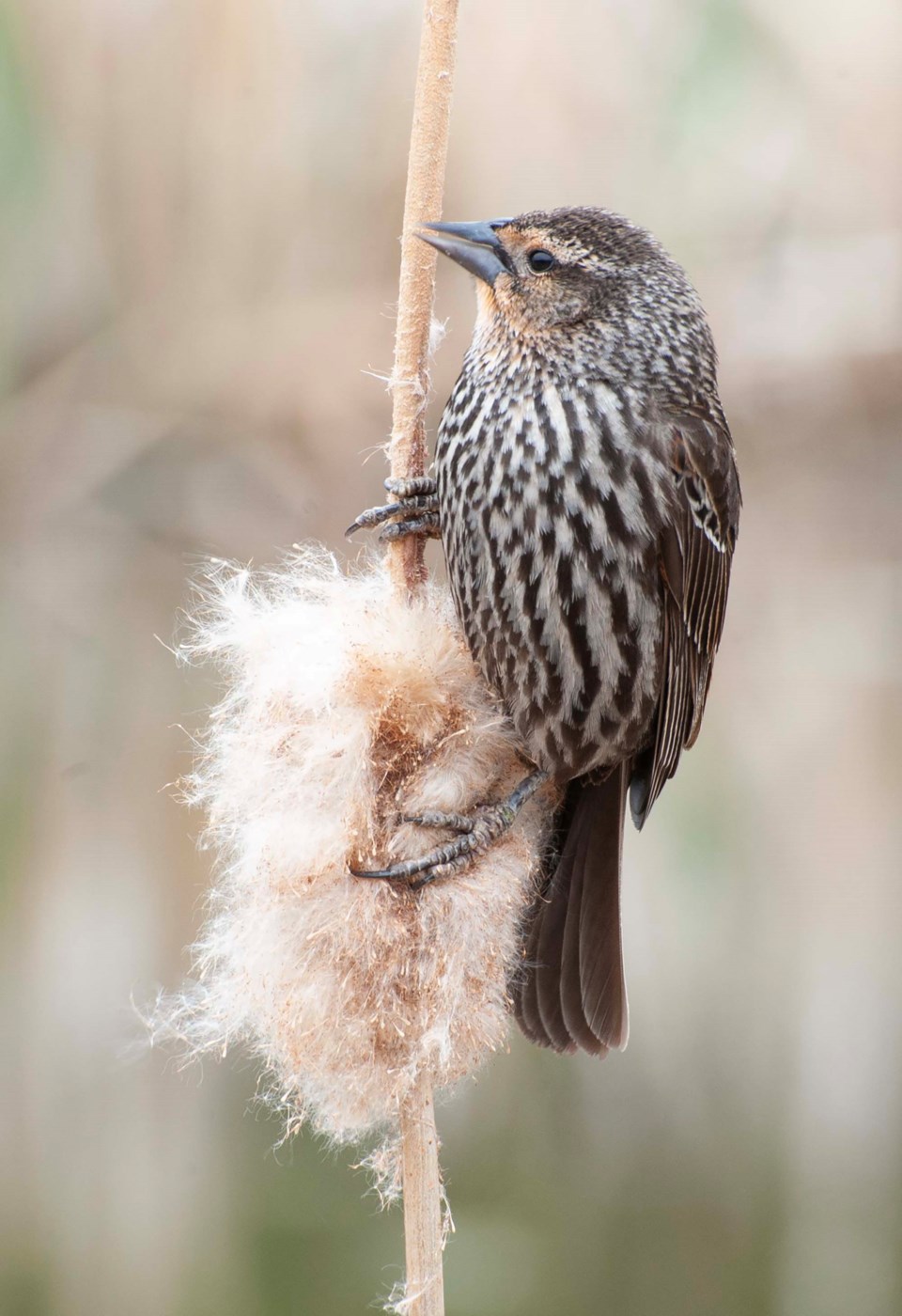A summertime singer in the form of a red-winged blackbird has shown up for the first time in St. Albert’s Christmas bird count.
Count co-ordinators released the results of the 2023 St. Albert Christmas Bird Count on Jan. 3.
Some 68 people watched feeders and beat bushes last Dec. 26 for the count — a big improvement over last year’s record-low turnout of 54. Count co-organizer David Grinevitch said sunny, above-zero weather made for ideal bird-watching weather and likely encouraged more people to take part.
Amateur ornithologists spent the day scouring the streets and countryside of a 24 km zone that extends from Big Lake to the south of Morinville counting every bird they could find. They spotted some 3,554 birds from 31 species.
Red-winged wonder
Spotted for the first time in count history was a red-winged blackbird. A common sight around St. Albert in the spring and summer, the males of this species are often seen, and heard, singing “conk-la-REE!” whilst perched upon a cattail, their red shoulders bared and black bodies flared. The females wear a brown-and-black camouflage pattern, but are just as vocal.
Red-winged blackbirds almost always head south from St. Albert for the winter to escape the cold.
This year, a female red-winged blackbird decided to spend Christmas in Lois Hole Centennial Provincial Park. Grinevitch said this bird has been hanging around the parking-lot entrance to the John E. Poole Wetland boardwalk since November, singing away.
“It might still be looking for a friend,” he said.
Grinevitch said this bird was probably the most exciting find of the count. He said the exceptionally warm, snow-free winter (supplemented by bird seed left on nearby benches) may have helped the bird survive December, adding that it was unclear how it would fare now that colder conditions had arrived.
The red-winged blackbird is an exceptional winter bird for the Edmonton region in general, with just one (in 2010) appearing in the Edmonton Christmas Bird Count’s 75-year history, said Edmonton count historian Geoff Holroyd.
“It is very unusual,” he said of St. Albert’s blackbird, adding that Edmonton did not have any red-winged blackbirds in its count held Dec. 17.
Another oddball in the St. Albert count was the mallard that was seen and heard flying overhead presumably en-route to a meal in a farmer’s field. Mallards were last spotted in the St. Albert count in 2012.
Grinevitch said winter mallards aren’t uncommon around Edmonton, as water treatment plants on the North Saskatchewan River provide them with open water. Holroyd said 66 of Edmonton’s 75 counts have had mallards.
St. Albert counters detected a Townsend’s solitaire on count day for the first time since 2010, Grinevitch noted. (This species was spotted during count week in 2011 and 2012 but not included in the official count numbers.) This winter thrush is known for its grey body, white eye-ring, and lovely song.
“A few days ago, the person who saw it emailed me and they said two of them had come to their heated birdbath,” Grinevitch said.
St. Albert counters did not spot any owls during this year’s count. Grinevitch said this was likely due to luck and the small turnout, as owls are generally not numerous. Snowy owls have been rare this fall around Edmonton in general, possibly due to the lack of snow. A short-eared owl (which hangs around swamps and flies in a bouncy zig-zag pattern) and a great horned owl were spotted during count week.
Data from the St. Albert count will be sent to Birds Canada to track trends in bird populations. Count results can be found at tabsoft.co/3iw0JLI.




